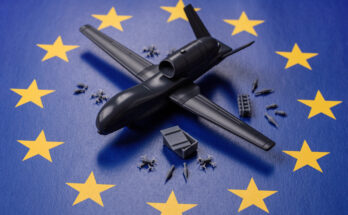By Nicole Auger, International Military Markets Analyst, Forecast International.
In a deal “not built on trust, but built on verification,” according to United States President Barack Obama, world powers and Iran struck a milestone agreement July 14 that would curb Iran’s nuclear program in exchange for billions of dollars in relief from international sanctions. In Tehran, Iranian President Hassan Rouhani said “a new chapter” has begun in his nation’s relations with the world.
The two leaders spoke moments after the formal announcement of the Joint Comprehensive Plan of Action, the completion of which comes after more than two weeks of talks during which negotiators blew through three self-imposed deadlines.
The accord will keep Iran from producing enough material for an atomic weapon for at least 10 years and impose new provisions for inspections of Iranian facilities, including military sites. The United Nations weapons embargo is to remain for five years, though it could end earlier if the International Atomic Energy Agency (IAEA) clears Iran of any renewed work on nuclear weapons. A ban on missile technologies will remain for eight years.
In November 2011, a report released by the IAEA stated that Iran was carrying out research that could only be used to develop a nuclear bomb trigger. Following the IAEA’s findings, the United States imposed sanctions on Iran’s central bank, the main clearinghouse for its oil export profits. Meanwhile, the European Union responded with an oil embargo. Iran rejected the findings as politically motivated, and in response to the new set of sanctions threatened to block the transport of oil through the Strait of Hormuz.
During this time, Iran also began enriching uranium at its underground Fordo plant, in what the U.S. claimed was a further escalation of Iran’s nuclear program. In the following months, United Nations nuclear inspectors found traces of uranium enriched up to 27 percent at the Fordo nuclear site. This development was followed by the EU boycott of Iranian oil exports, which came into effect in July 2012.
Besides the previously mentioned sanctions, the U.N. declared a ban on imports and exports of military equipment, material, and supplies that could be used in the nuclear program; on investments in oil, gas, and petroleum products; and on business dealings with Iran’s Revolutionary Guard Corps and other Iranian entities.
The sanctions against Iranian oil added complexity to trade dealings, making them increasingly difficult to conduct and resulting in a severe lack of funds for the Iranian regime. Also, the economy suffered from higher inflation, lower purchasing power for imported goods, and the devaluation of the country’s currency.
Finding itself between a rock and a hard place, Iran became eager to open negotiations regarding its nuclear program. On November 24, 2013, Iran and the P5+1, the five permanent members of the United Nations Security Council – the United States, the United Kingdom, China, Russia, and France – plus Germany, struck a deal that placed limitations on Iran’s nuclear program in exchange for eased international sanctions. The deal covered a span of six months, and only served as a first step toward a broader, long-term agreement.
Under the terms, sanctions would be suspended after inspectors from the IAEA had verified the implementation of nuclear-related measures by Iran. Since then, the nation has been true to its word as attested to by an IAEA inspection in January 2014.
After the initial six-month period, a number of extensions were issued before the July 14, 2015, long-term, comprehensive nuclear agreement was reached. Now, Congress has 60 days to go over the terms, giving opponents plenty of time to challenge the Obama administration with hearings in both the House and Senate. However, if Congress does disapprove the deal, President Obama has 12 days in which to veto the decision, and the president has already said that he would take such action, if necessary.
For 50 years, Forecast International intelligence reports have been the aerospace and defense industry standard for accurate research, analysis, and projections. Our experienced analysts compile, evaluate, and present accurate data for decision makers. FI's market research reports offer concise analysis of individual programs and identify market opportunities. Each report includes a program overview, detailed statistics, recent developments and a competitive analysis, culminating in production forecasts spanning 10 or 15 years. Let our market intelligence reports be a key part of reducing uncertainties and mastering your specific market and its growth potential. Find out more at www.forecastinternational.com



